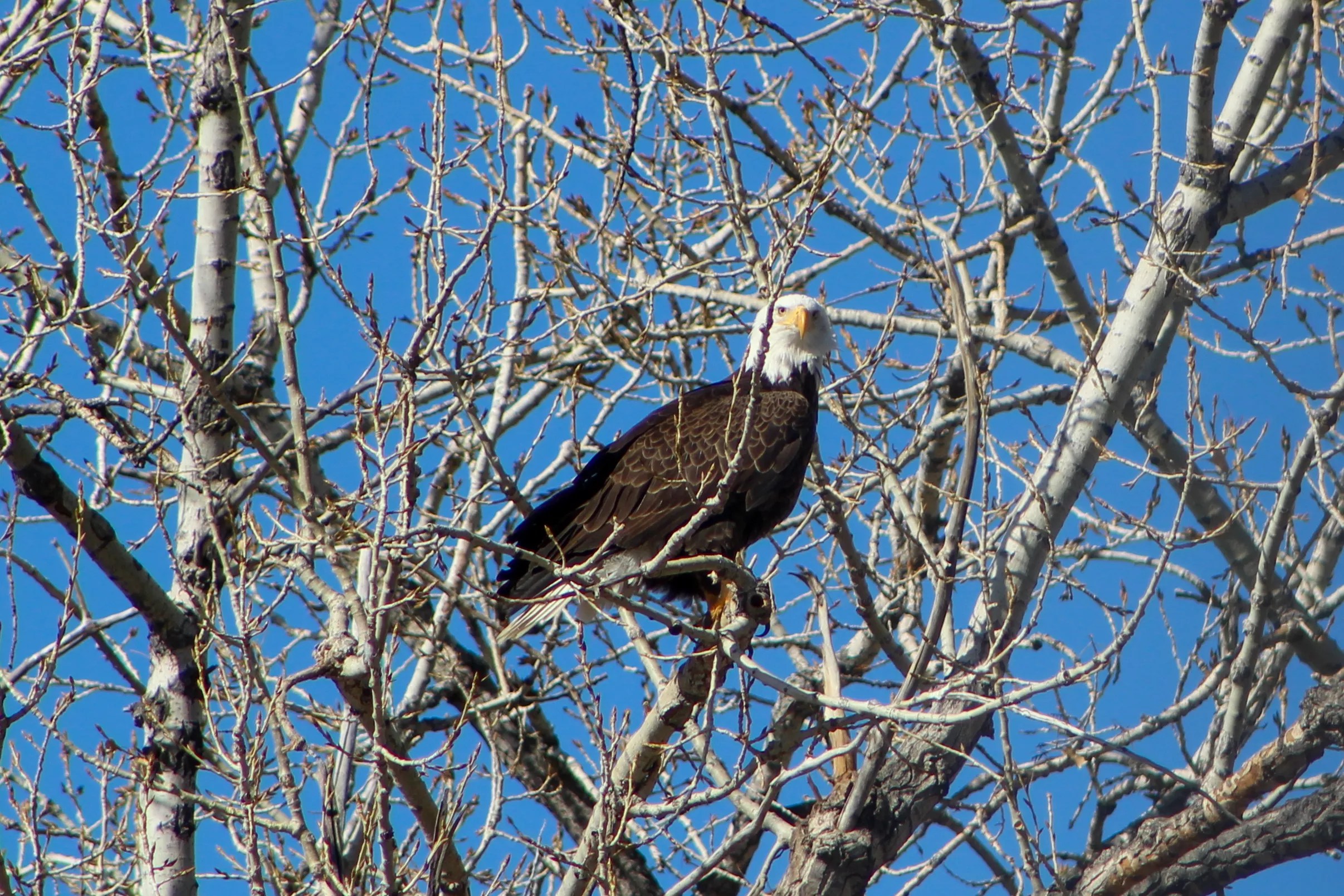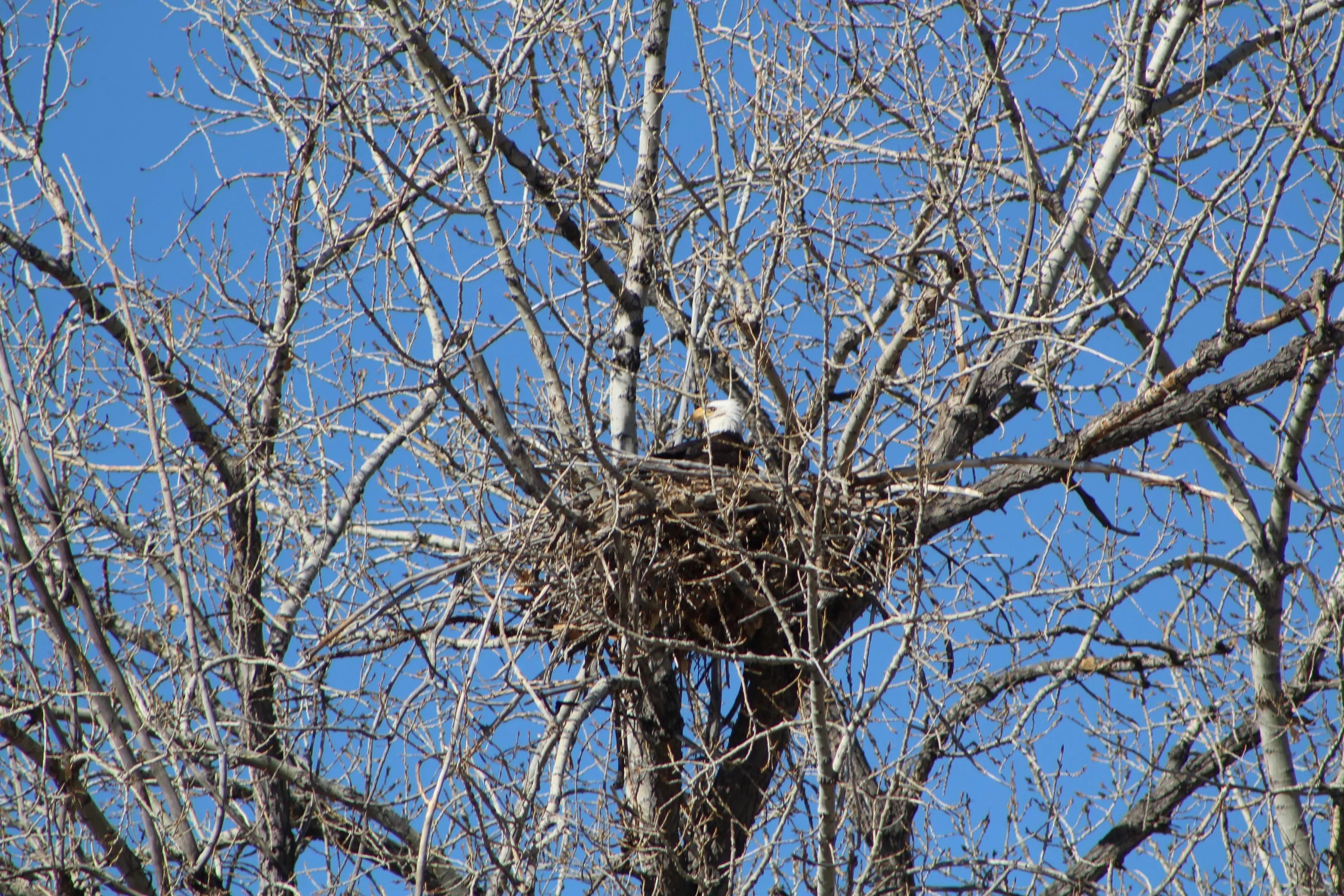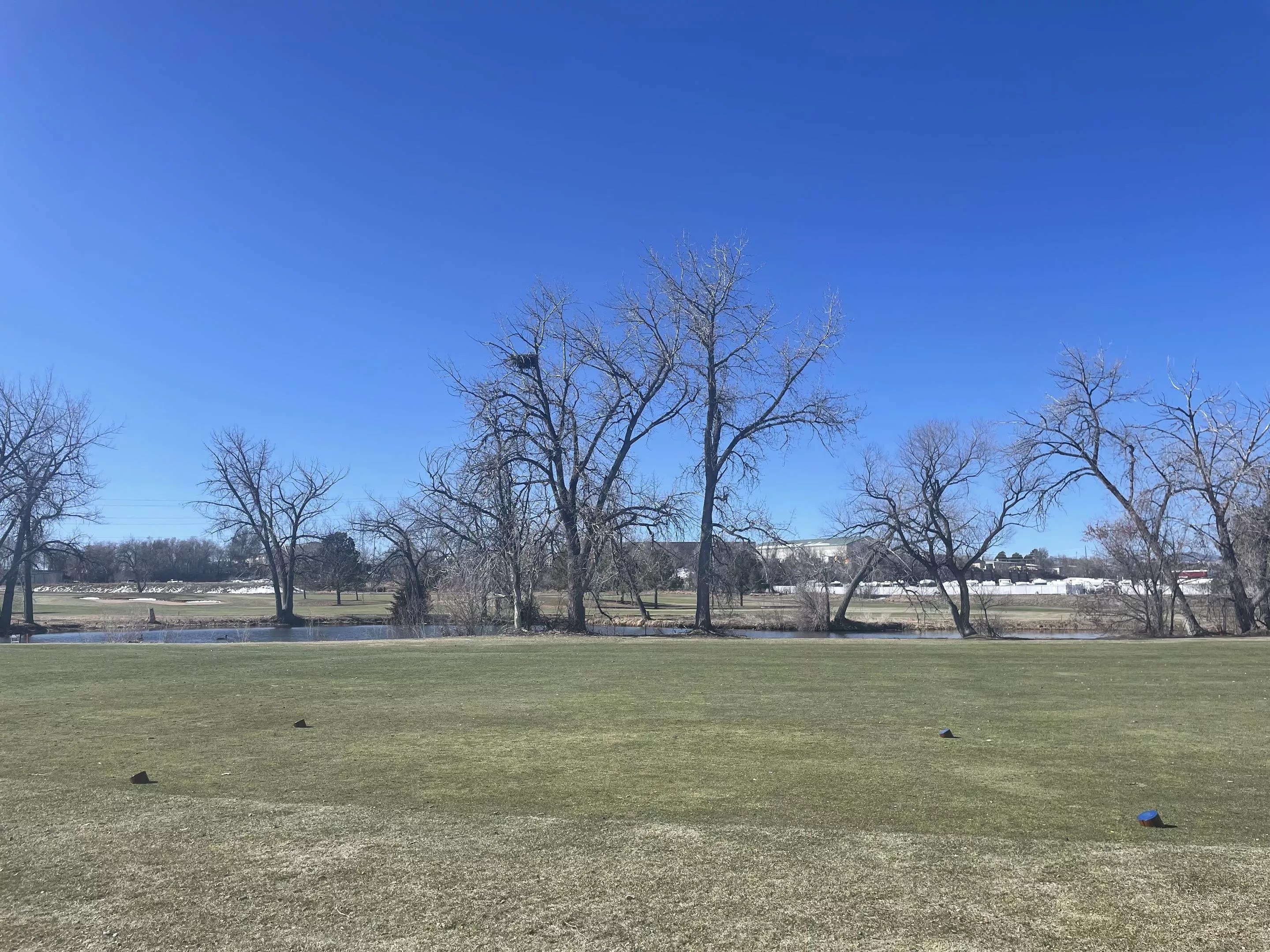
Neaveh Martinez, Broken Tee Golf Course

Audio By Carbonatix
The hardest hole on the back nine at Broken Tee Golf Course is now one of the easiest after course changes were made to protect a nest of bald eagles living directly in the flight path of soaring balls.
Jeremiah Stumpff, superintendent of the public course at 2101 West Oxford Avenue in Englewood, says his team observed the birds flying around for a few days before they began building the nest in early March.
“They started carrying sticks up into the tree,” he says. “They were carrying a stick that was probably as tall as me up there. It was pretty impressive.”
Stumpff has worked in golf for twenty years and says he’s seen lots of wildlife in his time. His wife even jokingly calls him a birder because of the amount of avian creatures he encounters.
Broken Tee is also home to nesting red-tailed hawks and an owl nest, as well as a magpie nest near Stumpff’s office. Geese live in the course’s three lakes and build nests on top of the maintenance shop each year. They even have birdhouses for bluebirds and outdoor boxes for bats.
“We’re just a little bird sanctuary,” course golf manager Shannon Buccio says.
But according to longtime employees, eagles have never built a nest around the course despite hunting in the area.
Broken Tree contacted Colorado Parks and Wildlife (CPW) quickly once employees realized the bald eagles were there to stay. March is late in the year for bald eagles to build nests, as they usually settle in and lay eggs by February, so CPW isn’t sure if this pair will lay eggs or if they were building a nest for fun or courtship reasons.
In the last two weeks, however, one eagle has stayed in the nest continually while the other goes out to hunt, leading Broken Tee employees to suspect there are eggs in there after all. They plan to have CPW visit again soon to confirm.
Bald eagles are federally protected under the Migratory Bird Treaty Act and the Bald and Golden Eagle Protection Act. (Red-tailed hawks are, too, but don’t come with as stringent regulations as bald eagles due to the eagle’s higher conservation status.) Regulations for hosting America’s favorite bird suggest a quarter-mile barrier around nests where there is no human activity allowed.

Lately, one of the bald eagles has been sitting in the nest full-time.
Neaveh Martinez, Broken Tee Golf Course
“If there’s human disturbance, the nest has a lower likelihood of succeeding and the eaglets have a lower likelihood of succeeding,” explains Kara Van Hoose, northeast region public information officer for CPW. “We just want to give the best possible chance to these eagles to reproduce.”
In high-density areas like a golf course, the barrier is only required to be an eighth of a mile, which is around 660 feet. Additionally, the barrier isn’t required after eggs hatch, so protection season usually ranges from December to July.
The larger protection radius would shut down most of the back nine of the course, according to Stumpff, so Broken Tee is working proactively to make sure the smaller radius will work.
“They’ve really done everything right in this scenario,” Van Hoose adds.
Course Changes
Broken Tee officially changed the layout of the hole on March 10, moving the tee and shutting off fairway access so the eagles would be at less risk of being disturbed. Course officials aren’t publicly sharing which hole the birds are nesting on in order to keep curious people from finding and disturbing them. Signs are posted to make it clear that people need to be careful on the course, also.
“We still need to make sure that they’re respected and no one’s making them anxious, so that’s why we completely roped off the tee box and the fairway,” Buccio says.
Broken Tee worked with the Colorado Golf Association and United States Golf Association to temporarily re-rate the updated hole from a par five to a par three as well as update the handicap rating. Usually, the hole spans 550 yards, but with the changes, it is now a 140-yard hole.
The team wanted to be sure revisions were made official before handicap active season began in Colorado on March 15, when golfers are allowed to begin posting scores for the year. Plus, clubs and leagues are starting up. Right now Broken Tee hosts around 140 golfers per day, but in peak season it can reach up to 300 players. The eagles will likely nest through high season, especially if there are eggs in the nest that were laid later than usual.
According to Stumpff, CPW doesn’t think increased mowing and activity during the spring and summer will disturb the eagles. Right now, there are more than 350 occupied bald eagle nests in Colorado, with more than half found in the northeast CPW region, which stretches from the top of the state down to Castle Rock.

The temporary tee box designed to protect the bald eagles.
Catie Cheshire
The number of observed bald eagle nests is going up each year in Colorado, according to Van Hoose, who says this is great news for a population that was seriously depleted fifty years ago.
“It’s been a really great conservation success story to see our nation’s symbol grow,” she says. “Along the Front Range, we have great bald eagle habitat. Eagles like to come back to the same nesting spots year after year. … They normally choose cottonwood trees that are in the later stages of the tree’s life, and it’s normally around water, so that’s why we see a lot of nests around the parks or reservoirs, because we have protected water sources.”
The same goes for golf courses, since maintained green areas are usually more peaceful than urban areas surrounding them. At Broken Tee, the eagles might appreciate that the Platte River runs through and there are ample prey in the form of geese, which have been carried away by bald eagle talons before.
In return, the predators have helped the staff keep geese and their waste away from the grass. “There’s a dead goose out there every couple of days,” Stumpff says, “which is beneficial for us, because [geese] make a mess out there.”
Both Broken Tee and CPW caution that people should not head to the golf course in hopes of getting near the eagles. It is a federal offense to pick up any objects related to eagles or their nests, including feathers.
Because of this, Broken Tee is asking people not to walk onto the course to see the nest – and as always, registered golfers should be the only people recreating there, anyway. Broken Tee also asks people who golf the back nine to be cognizant of the birds. Employees say they want to make coexistence work so the course can keep operating while keeping the birds safe instead of widening the impacted zone or shutting down.
“It’s important for us to have sustainability and be environmentally protected,” Buccio says. “We are nervous about people just walking out there on their own and causing safety concerns. We’re really tense about that.”
On the other hand, it’s been a joy to observe the eagles, and Buccio says if the birds do stick around or return next year, Broken Tee might consider naming the pair.
Nest, eagles. Nest!